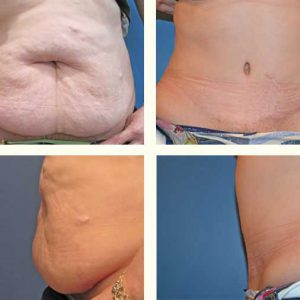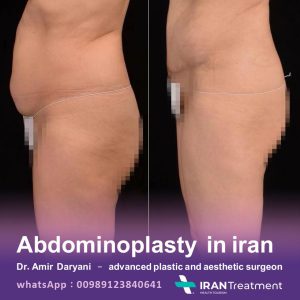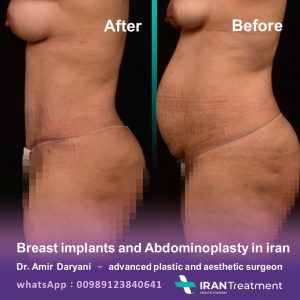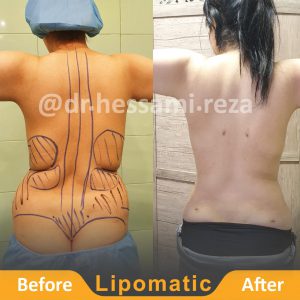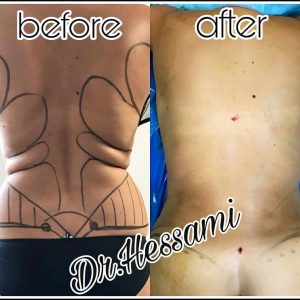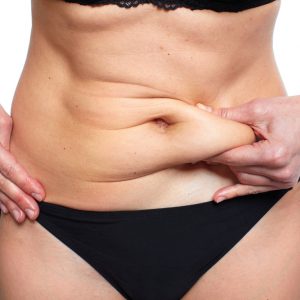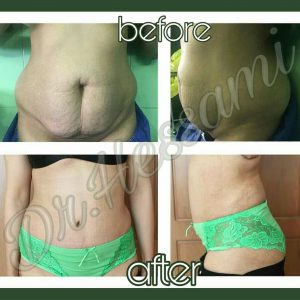Tummy Tuck in Iran
Abdominoplasty (Tummy Tuck in Iran ) or alternatives such as Lipo abdominoplasty are great options for abdominal aesthetic surgery which by removing extra fat and skin and tightening the abdominal muscles will make the tummy smooth make your body fit. Then you’ll get rid of extra skin and you can see your body in the mirror, feel young and happy and enjoy wearing the clothes you love.
What are the Cases of Abdominoplasty Surgery?
- Women who have had one or more deliveries and have loose skin, fat buildup, and reduced abdominal muscle tonic and skin cracks.
- People who suffer from abnormal abdominal muscles and skin weakness following severe weight loss.
- People with obesity who have undergone Bariatric surgery (such as gastric bonding or laparoscopic gastric bypass) and have severe weight loss, skin looseness all over their bodies, including abdomen and flanks.
Is Abdominoplasty Only for Women?
No, this procedure can also be performed on men, aince bariatric surgeries have increased, the number of men who are candidates for this procedure has also increased.
Is abdominoplasty or lipoabdominoplasty a way to lose weight?
No, these surgeries are not considered to be any weight loss procedures and the person prior to performing these surgeries should achieve maximum weight loss through diet and exercises and not have weight change for at least 6 months.
What should be the condition of a candidate of Tummy Tuck in Iran ?
- The weight of an individual should be close to the ideal weight (max. 30% more than the ideal weight)
- The person’s weight has remained the same over the last 6 months
- Has performed non-surgical procedures such as diet and exercise before surgery.
- Has realistic expectations of surgery
- Be mentally stable
- Understands the risks and potential consequences of the operation
- Does not intend to lose weight after surgery
Can a woman get pregnant if she has had Abdominoplasty in Iran?
Currently, pregnancy is not an absolute prohibition, but it is advisable to have an abdominoplasty after the last pregnancy. Because if they become pregnant after surgery, the skin will be loose again and it will cause the sutured muscles to stretch.
Can a person undergo abdominoplasty after the last delivery?
It is recommended to undergo abdominoplasty at least 6 months after the delivery, in order to return to how they were before pregnancy and that’s why abdominoplasty at the same time with cesarean is not recommended.
What are the prohibitions of classic Tummy Tuck in Iran ?
smoking
Diabetes
Malnutrition
Wound healing disorders
Immune disorder
Use of anticoagulants
Significant history of clotting in the deep veins of the foot or lung
Intestinal or bladder dysfunction
Venous insufficiency or lower extremity lymphedema
Notable medical problems include chronic obstructive pulmonary disease, kidney failure, anemia
What are the recommendations to the patient before performing Tummy Tuck in Iran ?
Stop smoking 4 to 6 weeks before surgery (smoking can delay wound healing and cause skin necrosis)
Take multivitamins daily
Discontinue taking aspirin or other blood thinning medicines as directed by your physician
Avoid all herbal and dietary supplements that are not approved by the surgeon.
Perform routine preoperative tests such as CBC, blood sugar, urea, creatinine, coagulation tests and other tests instructed by the surgeon.
Using abdominal truss for 2 weeks before surgery is recommended by some surgeons.
Medications such as vitamin E and omega-3 fatty acids and green tea should be discontinued as they may increase the risk of bleeding during and after surgery.
What are the drawbacks of classic abdominoplasty?
- In this method, the rate of complications such as seroma and skin flap necrosis are higher especially in smokers.
- More bruising and swelling and longer recovery time.
- In many cases, in classic abdominoplasty, the upper abdomen and flanks are not sufficiently smooth and some fat remains in the flap, and if necessary, this additional fat should be removed by liposuction six months later.
Doing a suction may loosen the skin and eliminate stretched and smoothed skin caused by the operation. In reverse method, when liposuction is first performed and a few months after abdominoplasty, flap release may be due to very severe fibrosis and bleeding.
How is classic tummy tuck performed?
In classic abdominoplasty, a large incision is made in the lower abdomen and all abdominal tissues (skin and fat) are released from the abdominal muscles to the rib cage. During the flap release, when reaching the navel, the incision is made around the navel and released from the surrounding skin but remains attached to the abdominal muscles and then releases the flap to the rib edge. If necessary, the abdominal muscles are sewn in and around the navel up and down (which is called pleats), which tighten the abdominal wall and make the waist more thin.
Then the released skin flap is pulled downwards and the extra skin is cut with the fat attached to it and the flap edges are sewn to the initial incision in several layers. Then the navel area is measured and cut, and the belly button that is connected to the muscle is removed from the incision area and sewn into the surrounding skin.
Does abdominoplasty (Tummy Tuck in Iran ) require general anesthesia?
Yes, this procedure is usually performed under general anesthesia
How long is the duration of abdominoplasty surgery?
Depending on the type and extent of the operation, it may take 2 to 5 hours.
How long is the duration of hospitalization after surgery?
Normally 24 to 48 hours
What are the post-abdominoplasty cares?
- The patient should observe bent posture during walking and resting for one to two weeks after surgery.
- Tie your belts or wear special corsets all day long (except for when bathing) for at least 2 months. The abdominal truss should be wore in order to cover the lower part, the incision site and the genital area.
- Avoid smoking and take deep breaths intermittently
- The patient should walk regularly and even move his legs regularly during rest.
- Drink plenty of fluids throughout the day
- Take multivitamin daily
- Careful attention to the location of incisions
- Usually patients are able to begin their professional activities after 15 days. If the abdominal muscles are sutured, patients should avoid heavy lifting or heavy activities for 2 to 3 months. If the muscles are not sutured, patients may resume most of their activities after 3 weeks.
What does the scar of Tummy Tuck in Iran looks like?
The scar is below the bikini line and may worsen during the first few months due to swelling and the healing process, but it usually takes about 9 to 12 months for the scar to become pale.
Are the results of the action sustainable?
The results are lasting if the patient follows a healthy diet and exercises regularly.
In what patients can lipoabdominoplasty be performed?
In most patients who are candidates for abdominoplasty, lipoabdominoplasty also can be performed.
Can Lipoabdominoplasty Be Performed with Liposuction in Other Parts?
Yes, back or waist liposuction and lipoabdominoplasty can be done in one session.
How is lipoabdominoplasty performed?
This is a combination of liposuction and abdominoplasty performed in one session. In lipoabdominoplasty, total abdominal liposuction is performed. This will loosen the skin, then cutting the skin is done like in abdominoplasty, but the flap release is not completely done until the navel is removed.
Flap release is then performed on the area above the navel by restricting tunnel opening to about 4 cm to the inferior part of the sternum, thereby preserving most of the blood, lymphatic and nerve vessels, approximately 80% of the abdominal wall blood supply through the vessels. Perforated blood is formed, most of which is preserved. If necessary, the abdominal muscles are sutured to the midline above and below the navel.
As a result of liposuction, the skin flap becomes very flexible, the extra skin is removed and the skin is sutured. Finally, the navel is determined and the navel is removed and reconstructed.
What are the benefits of lipoabdominoplasty?
The benefits of this method are:
- Less bleeding
- Because of the liposuction abdominal shape is better and the profile of the patient is more natural.
- Most important nerve, lymphatic and abdominal nerve arteries are preserved.
- The sensation of the lower abdomen is maintained better and there is less postoperative pain.
- The rate of postoperative complications (hematoma, seroma, necrosis and wound opening) is less in this procedure.
- Post-operative recovery is quick and patient discharge is performed sooner.
- The size of the cut is shorter in this method and the likelihood of dog ears is very low.
- The safety of this method (compared to the classic method) is higher for smokers.
Mini Abdominoplasty
Patients ideal for mini-abdominoplasty are usually younger and are from 25 to 50 years.
In these individuals, the accumulation of fat is low to moderate, with soft tissue loosening and skin cracks confined to the lower abdomen (under the navel). In order to shape the abdomen better, this can also be done by splitting the muscles and liposuction simultaneously.
In this procedure, the navel is usually preserved and not moved (incision is not made around the navel) or the navel may be disconnected and after pleating the muscles the navel can be re-implanted, if necessary.
What is the patient’s postoperative control referral?
The first session is 5 to 7 days after surgery and the second session is10 to 14 days after surgery and then according to the patient’s status at intervals indicated by the physician.
For what symptoms you should be referred to a physician or referred for a control visit after surgery?
Bleeding from the site of drainage
Skin discoloration around the cut and navel (bruises are around the cut and navel)
Purulent discharge from drainage site or surgical incision
How is the dressing replacement surgery site and when is it done?
The navel bandage and lower abdominal incision should be replaced daily. Rinse with povidone iodine first and then with physiological saline (or normal saline) and then apply Vaseline gas and then sterile gas.
If necessary, replace the bandage on drainage area (if the dressing is wet) 3 to 4 times daily.
Do not place non-sterile bandages directly on the wound.
What can be used to accelerate surgical healing?
Use of Vit C compounds
What can help reduce swelling and bruising at the site of surgery?
If blood pressure is not low, the use of pineapple or celery juice is effective in reducing bruising and, if blood pressure is low, celery juice can be mixed with apple or carrot juice. An alternative approach is to use Anaheal capsules (with pineapple ingredients) during the first two weeks after surgery, avoid medications such as aspirin, ibuprofen, and indomethacin. (It should be discontinued 10 to 14 days before surgery.) Alcohol use is prohibited from 2 weeks to 3 weeks after surgery to reduce the chance of bleeding. Tobacco (cigarettes and hookahs) is prohibited for up to one month after surgery to prevent the risk of skin necrosis (skin blackening). (It is recommended to refrain from smoking or hookah at least 4 weeks before surgery.)
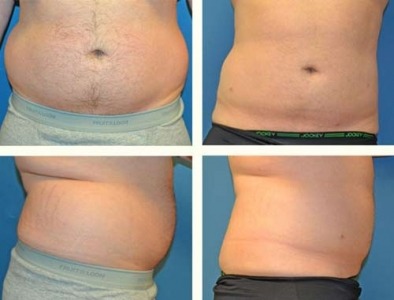
How long after a patient’s abdominoplasty surgery can he start his daily activities? And how long after surgery can he start his sports activities?
If abdominoplasty surgery is performed with the abdominal muscles being pleated, heavy exercise or heavy lifting is prohibited for 2 months.
Normal activities can be done after 10 to 14 days. Driving is prohibited for 2 to 3 weeks.
How should you sleep and rest and walk after abdominoplasty?
– During the first two weeks after surgery, the patients should have their heads up (30 to 40 degrees) during sleep, and the legs should be close to the abdomen.
Sleeping on the abdomen is forbidden. It is ok to rotate with the legs close to your abdomen.
– For 10 to 14 days after surgery, the patient should be bent while walking.
How long after surgery can the patient travel by airplane?
Traveling by airplane is allowed after 3 weeks. If the patient is living in another country, it is recommended to stay in Iran for at least one month after surgery.
How do I dress after Abdominoplasty in Iran?
It is recommended that the patient wear loose-fitting clothing during the postoperative period to avoid any problems especially when having bandages.
How is eating plans after Abdominoplasty in Iran?
After the patient is fully awake and not vomiting, the use of liquids such as water and fruit juice is permissible, and also the use of soft compote and biscuit is permissible. It is advisable to eat light foods such as soup or chicken in the evening after surgery. Regular (low to moderate volume) diet is permissible starting from the following day, but overeating should be avoided.
When is the post-operative bath time?
It is forbidden to bathe before removing the drains on both sides, but it is ok to wash the head and wet towels can be used to clean the body.
After removing the drains (usually 5 to 7 days after surgery), it takes 24 to 72 hours for the drain holes to be closed automatically and bathing is permitted after this time.
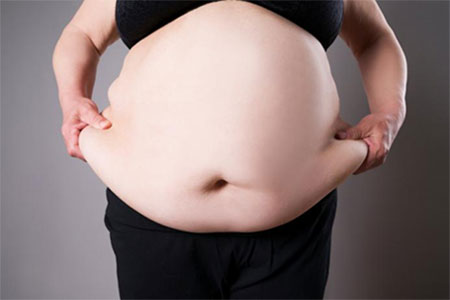
What is the instruction of using of an abdominal truss after the surgery?
The use of a medical abdominal truss is necessary within 2 to 3 months after surgery and should be changed daily. It is recommended that an additional abdominal truss be provided to replace the abdominal truss if the abdominal truss is dirty and needs to be washed.
What steps can be taken to prevent deep clotting in the legs and embolism?
Anti-embolism socks are used to prevent inferior deep clotting and predominantly leg tumors (DVT) and embolism during and after surgery, which should be used for at least 2 weeks after surgery.
In many patients, in addition to the above measures and depending on the case, to prevent DVT and embolism, anticoagulants and injectables such as heparin and enoxaparin are used before and after the surgery, the method of injection and the duration is described at discharge.
What medications are prescribed for the patient after discharge?
Oral antibiotics are prescribed to prevent infection at the site of operation, which is described depending on the type of antibiotic used and how long it is used.
To control postoperative pain, the patient uses medications such as acetaminophen codeine or suppository injectable ampoules the instruction of using which will be explained at discharge.
Tell your surgeon if you have constipation (before surgery) to prescribe the right medicine.
When is the time of removing suture at the site of surgery and what is the subsequent care?
– The sutures of the abdominal surgical incision are absorbable and do not need to be removed, and only after 10 to 14 days will the knots on both sides of the incision be cut.
Sutures inside the navel are non-absorbable and will be removed 10 to 14 days after surgery.
– After removing or cutting sutures and ensuring that the wound is healed, the use of gel or anti-scar creams is recommended to prevent excess meat or bumps in the incision site. Silicone sheets or laser can be used if necessary.
Abdominoplasty in Iran
Abdominoplasty (Tummy Tuck) and Lipo abdominoplasty
Tommy Tuck Abdominoplasty and Lipoabdominoplasty
Jam Hospital
Body sculpting
Body sculpting


